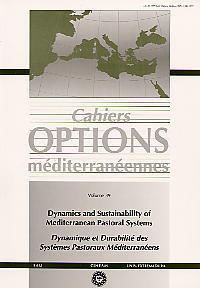| Article précédent | p. 247-250 | Article suivant |
A survey of grass species infected by fungal endophytes in dehesa pastures
Epichloë and Neotyphodium fungal endophytes infect several grass species. Endophytic infection is correlated with greater drought and invertebrate pest resistance in host plants and with intoxications in livestock due to the production of alkaloids by the fungi. To find out which grass species in dehesa systems are infected by fungal endophytes, a survey was made in the province of Salamanca (Spain). Plant samples were microscopically examined for the presence of intercellular mycelium, and fungal endophytes were isolated and identified. Several grass genera were found to be infected by endophytic fungi. High rates of infection were observed in several species of Festuca. Other genera that hosted endophytes were Lolium, Holcus, and Alopecurus. In spite of being advantageous for the plants, the antiherbivore alkaloids present in infected grasses may be an antinutritional factor to consider in dehesa pastures.
- [ Afficher ]
- [ Télécharger ]
- [ Exporter la citation ]
Vous pouvez télécharger la citation au format :
- [ Imprimer ]
-
Mots-clés
ENDOPHYTE, EPICHLOE, GRAMINEECiter cet article
Zabalgogeazcoa I., Vázquez de Aldana B.R., García Ciudad A., García Criado B. A survey of grass species infected by fungal endophytes in dehesa pastures. In : Etienne M. (ed.). Dynamics and sustainability of Mediterranean pastoral systems . Zaragoza : CIHEAM, 1999. p. 247-250. (Cahiers Options Méditerranéennes; n. 39). 9. Meeting of the Mediterranean Sub-Network of the FAO-CIHEAM Inter-Regional Cooperative Research and Development Network on Pastures and Fodder Crops, 1997/11/26-29, Badajoz (Spain). http://om.ciheam.org/om/pdf/c39/99600081.pdf



